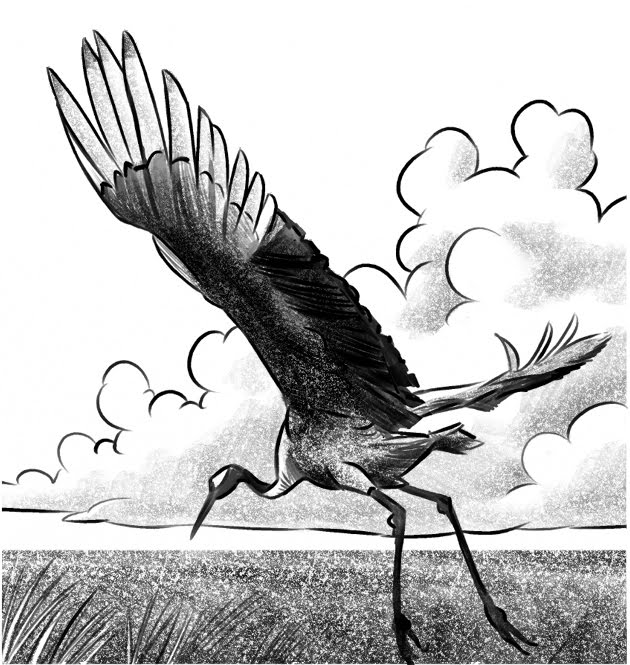The Common Crane (Grus grus) resembles a Grey Heron in many ways, although in flight it can be recognised by its outstretched neck instead of the heron’s characteristic bent neck. It has a wingspan of seven feet, and when it is standing, its feathers form a big, drooping, bushy tail. The bird is grey, with black and white on the head and neck and a patch of red on the top of the head. Part of its courtship and bonding ritual is to ‘dance’, bowing, jumping, throwing sticks and flapping its wings. The birds make a loud trumpeting call, often in the early morning.
The crane lives in a variety of shallow wetland habitats, picking up food from land and water. Its food includes roots, shoots, leaves, grain, and small prey. The nest is a heap of vegetation, usually on the ground in or near water, and two eggs are incubated for about 28 days. The young birds are not fully mature until they are four to six years old.
Over the centuries, the bird has been threatened by habitat loss and hunting, and, more recently, by changes in land use, and collision with power lines. However, particularly in Western areas, where conservation efforts have been the greatest, the species is now recovering.
Information about the common crane:
http://www.birdguides.com/species/species.asp?sp=039001
Coming tomorrow The return of Cranes to Norfolk
Animal Anthology To Raise Funds for Born Free
Bridge House Publishing announce new book coming Spring 2010. For more about Bridge House please see their website.
This book is the annual charity book for Born Free...if you want to get involved with promoting and selling this book- email me!
www.bridgehousepublishing.co.uk
This book is the annual charity book for Born Free...if you want to get involved with promoting and selling this book- email me!
www.bridgehousepublishing.co.uk

Subscribe to:
Post Comments (Atom)





No comments:
Post a Comment